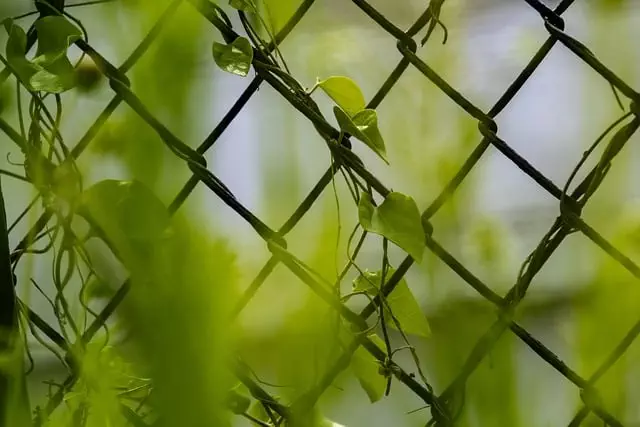Malaysian Kratom Buds, derived from the Mitragyna speciosa tree, are renowned for their mood-enhancing and wellness properties due to their unique alkaloid profile. The balance of mitragynine and 7-hydroxymitragynine in these buds offers a range of effects from energizing to sedating, catering to diverse user needs. To ensure the highest quality and efficacy, it's crucial to select Kratom from responsible sources that provide transparency about their cultivation methods. For new users, starting with a low dose is recommended for personal tolerance assessment and a safer experience.
In Malaysia, Kratom is traditionally cultivated sustainably, aligning with the country's environmental stewardship and cultural heritage. The nutrient-rich soils of regions like Sarawak and Kelantan support the growth of popular strains such as Bali and Maeng Da. These trees are nurtured under natural forest cover to preserve their ecological balance, which also helps in minimizing environmental impact.
The legal status of Kratom in Malaysia is subject to a patchwork of regulations that vary by state, requiring users and businesses to be knowledgeable about local laws to avoid penalties. Internationally, the legal standing of Kratom differs significantly, with some countries banning it outright while others regulate it for medical or research purposes.
Tampa summer camps may touch upon wellness and natural supplements like Kratom, providing educational opportunities on responsible usage and sustainability. This underscores the broader public health and ethical discussions surrounding Kratom's use and the need for clear legal guidelines that balance health considerations with cultural practices. The discourse calls for legislation that protects public health while respecting Malaysia's traditional plant-based medicine use, a discussion with implications beyond national borders.
Explore the intricate world of Malaysian Kratom Buds, a botanical phenomenon captivating global attention. This article unravels their potency, detailing how these natural gems are cultivated and harvested with sustainable practices rooted in tradition. Delve into the legalities surrounding Kratom’s status in Malaysia and its implications internationally. Whether you’re a curious enthusiast or seeking insights for responsible usage, this guide is your compass through the complexities of Kratom’s role across cultures. While this exploration doesn’t extend to related programs like Tampa summer camps, it offers a comprehensive understanding of this unique botanical substance.
- Unveiling the Potency of Malaysian Kratom Buds: A Comprehensive Guide
- The Cultivation and Harvesting Process of Malaysian Kratom Buds: Insights into Sustainability and Tradition
- Understanding the Legal Landscape and Usage Implications of Kratom in Malaysia and Beyond
Unveiling the Potency of Malaysian Kratom Buds: A Comprehensive Guide

Malaysian Kratom Buds, derived from the leaves of Mitragyna speciosa trees native to Southeast Asia, have long been recognized for their unique alkaloid profile and potent effects. These buds are celebrated for their ability to influence mood, energy levels, and overall well-being, attributes that have garnered attention across various demographics, including those seeking natural alternatives for health and vitality. The specific strain of Kratom from Malaysia is particularly noteworthy due to its distinct balance of mitragynine and 7-hydroxymitragynine, which are the primary alkaloids contributing to its efficacy. Users often report a nuanced range of experiences, from stimulating effects at lower doses to sedative properties at higher concentrations, making Malaysian Kratom a versatile choice for diverse preferences and needs.
When sourcing Malaysian Kratom Buds, it is crucial to consider the cultivation practices and the purity of the product. The geographical location and environmental conditions in Malaysia can significantly influence the alkaloid content, thus affecting the potency and quality of the Kratom buds. Reputable vendors typically provide detailed information about their sourcing and production processes, ensuring that consumers receive a high-quality and safe product. For those interested in exploring the effects of Malaysian Kratom Buds, it is advisable to start with a modest dose to gauge individual sensitivity and to use products from established suppliers who adhere to strict quality standards. This approach ensures a more predictable and enjoyable experience, whether for relaxation, focus, or overall well-being.
The Cultivation and Harvesting Process of Malaysian Kratom Buds: Insights into Sustainability and Tradition

The cultivation and harvesting of Malaysian Kratom buds are deeply rooted in sustainable practices and rich tradition, a reflection of the country’s commitment to preserving its natural resources. These mitragyna speciosa trees thrive in the nutrient-rich soils of Malaysia, particularly in regions like Sarawak and Kelantan. The process begins with selecting the right strain for cultivation, such as the popular Bali or Maeng Da, which are then carefully planted and nurtured to maturity under the shade of the forest canopy, a method that mirrors the trees’ natural growth conditions. This eco-friendly approach not only supports the health of the Kratom plants but also maintains the integrity of the local ecosystems.
As the Kratom trees mature, farmers monitor their growth closely, ensuring that the environmental impact is minimal. The harvesting process is a testament to tradition and sustainability; it involves handpicking the leaves at their peak maturity, typically during the latex-rich stage of the month. This precise timing allows for optimal alkaloid content, which is crucial for the efficacy of the Kratom product. The leaves are then sun-dried to preserve their unique properties, a method that avoids the use of harsh chemicals and heat processing, thus maintaining the integrity of the natural compounds found within the buds. This traditional approach to harvesting Malaysian Kratom buds not only ensures a high-quality product but also aligns with the country’s efforts towards sustainable agricultural practices.
Understanding the Legal Landscape and Usage Implications of Kratom in Malaysia and Beyond

In Malaysia, the legal status of Kratom Mitragyna speciosa is subject to regulatory shifts and variations depending on the jurisdiction within the country. While Kratom is not explicitly scheduled under the Poisons Act 1952 at the federal level, individual states may have their own classifications and restrictions. This intricacy necessitates a nuanced understanding of local regulations when considering the use, sale, or possession of Kratom. Users and businesses must stay informed about the evolving legal landscape, as penalties for non-compliance can be severe. Internationally, the regulatory approach to Kratom varies significantly, with some countries banning it entirely due to concerns over its psychoactive effects and potential for abuse, while others regulate it for medicinal or research purposes.
The implications of Kratom’s legal status extend beyond mere compliance; they encompass public health considerations, economic impacts, and ethical debates around the use of natural substances. In Malaysia, where the regulatory framework is still in a state of flux, users often seek information on the safety, efficacy, and potential benefits of Kratom. The substance has been traditionally used for its stimulant and analgesic properties, with anecdotal evidence supporting its use for pain relief and as a mood enhancer. However, it is crucial for individuals to approach such substances with caution, especially in the absence of clear regulatory guidance. This underscores the importance of responsible consumption and advocacy for clear legislation that protects public health while respecting cultural practices and traditions associated with natural plant medicines.
Malaysian Kratom Buds present a fascinating intersection of traditional practices and modern interest, particularly in the realm of natural wellness. This article has delved into their potency, shedding light on how these buds are cultivated and harvested sustainably, preserving the cultural heritage of Malaysia while meeting global demand. It’s clear that Kratom’s legal status and its applications merit careful consideration by policymakers and health professionals alike, as its use transcends national borders. As with any natural substance, understanding its implications is paramount for those exploring its potential benefits. For those interested in the subject further, or indeed in the diverse fields of botany, ethnobotany, or even camp management—as exemplified by Tampa summer camps which offer rich educational experiences—the nuances of Kratom’s story are a testament to the importance of responsible exploration and learning.






